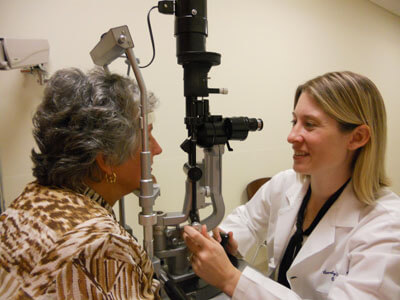Specialist of UCTC can help in curing ophthalmological diseases

Some ophthalmological disorders are minor and fleeting, while others bring to a loss of vision. The most wide-spread include cataracts (condition with clouded lenses), glaucoma, during which the optic nerve is damaged because of pressure in the eye, conjunctivitis - an infection and retinal disorders if problems are entailed by the nerve layer, which is located at the back of the eye.
The best protection method is to have systematic checkups, because some disorders may not have symptoms. The only way to be protected from them is to detect it as soon as possible to take measures. Visit ophthalmologist immediately if there are abrupt changes in vision and everything is dim in front of you. Other symptom that should make you vigilant is seeing flashes of light. Attention is required when person has double vision, pain, inflammation and if fluid goes from the eye.
Summary table of the most common ophthalmological diseases
|
|
Definition |
Causes |
Effects |
Best disease |
It is condition, during which the central vision is deteriorated. | This is inherited. | Egg yolk formation, deteriorated sight, loss of central sight with time. |
Optic nerve atrophy |
Optic nerve atrophy affects optic nerve. |
Radiation, shock, trauma, toxic substances. Glaucoma, stroke, multiple sclerosis, brain tumor. | Decrease of the field of sight, inability to see fine details, faded colors, deteriorated reaction of pupil to light. Vision can be lost eventually. |
Retinitis pigmentosa |
Retinitis pigmentosa is progressive degeneration of retina photoreceptors. |
This is hereditary. | Deteriorated ability to see in the darkness, worsening of the peripheral one, tunnel vision. |
Retinopathy of different etiology |
During Retinopathy the blood vessels are damaged. |
Some medical conditions, such as lupus or sickle cell disease. It can be a complication of diabetes too. | The vision is blurred, blind spots, floating spots, different perception of color, loss of sight, pain in the eye when the condition is on the advanced stage. Bleeding and scarring as a result of that. |
Stargardt’s disease |
It is eye disorder, during which the macula is affected. |
It has another term – juvenile macular dystrophy. This is because the teenagers are frequently affected. | Patients experience blurred and distorted sight and perceives colors in a different way. Blank spots in the center of the eye on the advanced stage of the condition. |
Deterioration of cells in the eye bring to a damage that is impossible to restore in some cases. Human embryonic cells can be turned into any type of cells and might be used for treatment of ophthalmological disorders. It is especially useful when there are no proven medications to cope with the disease.
Cell therapy in UCTC for different eye disorders
Replacement stem cells can be injected to you in Kiev clinic UCTC. The stem cells are injected and the whole procedure does not take much time. The patients do not stay long in the health center and can return home soon. This is the most effective treatment known nowadays.